Understanding Industrial Fly Traps in Agriculture
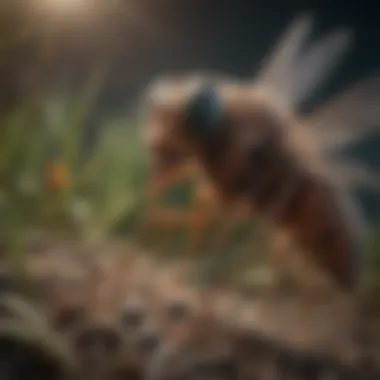
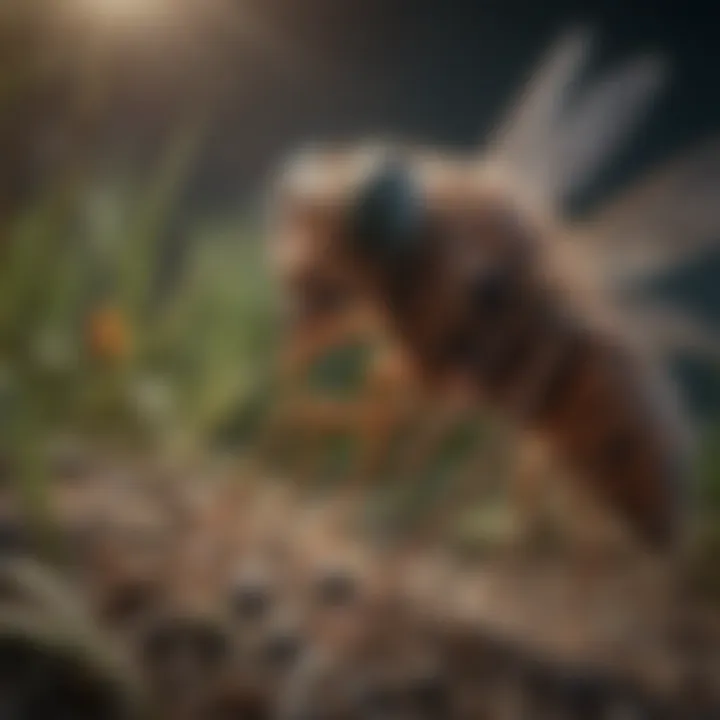
Intro
The control of insect pests in agriculture has become a pressing concern. Among various tactics, industrial fly traps stand out due to their ability to effectively manage pest populations. Understanding their mechanisms, applications, and effectiveness is vital for anyone involved in agriculture, from new farmers to seasoned experts. This article aims to provide a comprehensive overview of industrial fly traps, highlighting essential aspects that can significantly influence agricultural productivity.
Topic Overview
Definition and Importance
Industrial fly traps are devices designed to capture and eliminate flies and other flying insects within agricultural settings. These traps are crucial for maintaining crop health and enhancing overall yields. Their significance lies not only in pest control but also in supporting sustainable farming practices by minimizing chemical pesticide use.
Brief History and Evolution
The development of fly traps dates back to ancient times when simple sticky surfaces or baited containers were utilized. Over the years, technology has advanced. Innovations in materials and design have ushered in more efficient traps. Modern industrial fly traps incorporate sophisticated mechanisms to attract, capture, and often kill insects effectively.
Key Techniques and Innovations
Sustainable Farming Practices
Integrating fly traps into farming systems reflects a commitment to sustainability. These traps reduce the reliance on harmful chemicals, promoting healthier ecosystems. Farmers utilizing these tools find they can achieve better pest control without the adverse effects associated with synthetic pesticides.
Advanced Agronomic Technologies
Recent advancements in technology have enhanced the effectiveness of fly traps. For example, smart traps equipped with sensors can monitor pest activity and report data to farmers in real time. This technology improves not only efficiency but also offers valuable insights into pest behavior and environmental conditions.
Practical Applications
Step-by-Step Guides
Utilizing industrial fly traps effectively involves several steps:
- Assessment of Pest Population: Identify and quantify the fly population to understand the scale of the problem.
- Selecting the Right Trap: Choose a trap type based on the specific fly species and the environment. Options include adhesive traps, baited traps, and electric traps.
- Optimal Placement: Install traps in areas with high fly activity, such as near livestock, waste, or food sources.
- Regular Maintenance: Inspect traps frequently to ensure they are functioning correctly and replace them as needed.
Case Studies or Real-World Examples
Several farmers have successfully implemented industrial fly traps in their management practices. A notable case involved a dairy farm in Wisconsin, where the introduction of these traps resulted in a significant reduction in fly populations, leading to improved animal health and milk production. The traps not only captured flies but also contributed to a cleaner, more hygienic environment.
"The use of industrial fly traps has transformed our approach to pest control. We have seen a remarkable decrease in fly numbers, fostering a healthier farm atmosphere." — A Wisconsin Dairy Farmer
By examining these case studies, farmers can glean insights into effective strategies for trap use in various agricultural contexts.
Culmination
Understanding industrial fly traps, their mechanisms, and applications is essential in today’s agricultural landscape. By adopting these tools, farmers can enhance pest management strategies and promote sustainable practices. This knowledge equips individuals to make informed choices that align with modern agricultural demands. As this field evolves, continuous learning and adaptation will be crucial for achieving success in pest management.
Preface to Industrial Fly Traps
Industrial fly traps play a crucial role in modern agriculture, serving as an essential component in pest management strategies. With the increasing concerns about chemical pesticide use and its impact on the environment, understanding the mechanisms and applications of fly traps has become vital for farmers and agricultural enthusiasts. These traps not only mitigate the impact of flies and other pests but also contribute to sustainable farming practices. The significance of industrial fly traps lies in their ability to reduce reliance on chemical interventions, making them an attractive solution for crop protection and livestock management.
Defining Industrial Fly Traps
Industrial fly traps can be understood as specialized devices designed to capture and control fly populations within agricultural settings. They come in various forms, each utilizing different mechanisms to attract and eliminate flies. Common types include mechanical, electric, pheromone, and baited traps. Each type operates on distinct principles and is selected based on specific needs and environmental conditions. The definition of these traps is not limited to their functional characteristics; it also encompasses their design, usability, and effectiveness in targeted applications.
Importance in Agriculture
The importance of industrial fly traps in agriculture cannot be overstated. They offer several benefits:
- Pest Management: By capturing flies, these traps help in reducing the overall pest population, thereby protecting crops from damage and ensuring a better yield.
- Reduced Chemical Use: Fly traps provide a more eco-friendly approach to pest control, minimizing the necessity for chemical pesticides that can have harmful side effects on the environment and human health.
- Cost-Effectiveness: Implementing fly traps can reduce long-term costs associated with pest damage and pesticide application.
- Enhanced Livestock Health: For farms with livestock, industrial fly traps help in maintaining a healthier environment by reducing the parasites and diseases associated with fly populations.
By integrating fly traps into agricultural practices, farmers not only enhance productivity but also adopt a more sustainable approach to pest management. Understanding how these traps function and their role within the broader landscape of agriculture is essential for optimizing their use.
Types of Industrial Fly Traps
Understanding the various types of industrial fly traps is essential for effective pest management in agriculture. Each type has unique mechanisms, benefits, and considerations, which can significantly impact pest control efforts. By identifying the right trap for specific environments, farmers and agricultural enthusiasts can enhance crop protection and promote sustainable practices.
Mechanical Traps
Mechanical traps are one of the oldest and most straightforward methods for controlling flies. They work by using physical barriers or mechanisms to capture flies. Some common designs include fly paper, sticky traps, and manual fly catchers. These traps are non-toxic and do not rely on chemicals, making them an attractive option for organic farming.
Advantages of mechanical traps include:
- Safety: These traps are safe for non-target species.
- Cost-Effectiveness: Mechanical traps generally have lower upfront costs compared to electric or baited traps.
- Durability: Many of these traps can be reused several times if maintained properly.
However, their effectiveness may depend on proper placement and the trap’s visibility to the target flies. Farmers should regularly check these traps to ensure they function optimally.
Electric Traps
Electric traps use power to attract and kill flies. Most commonly, they consist of a light source that draws flies in, followed by a grid that delivers an electric shock upon contact. These traps can be effective in larger open areas but require a power source.
Key benefits of electric traps include:
- High Efficiency: They can capture a large number of flies quickly.
- Low Maintenance: Once installed, they may require less maintenance than mechanical traps.
However, electric traps may have higher initial investments and are less environmentally friendly when comparing energy costs. Additionally, they may not be effective against all species of flies, highlighting the need for a diverse pest management strategy.
Pheromone Traps
Pheromone traps leverage chemical signals produced by flies to attract them. These traps release synthetic pheromones that mimic the natural scents flies use to find mates. This targeted approach increases the likelihood of catching species-specific flies, making them particularly useful in monitoring and controlling populations.


The advantages of pheromone traps include:
- Targeted Control: They attract only specific types of flies, which minimizes harm to beneficial insects.
- Data Collection: Farmers can use these traps to assess the presence and population levels of pest species.
On the downside, pheromone traps often require replacement of lures, which can add to overall costs. Careful selection of the pheromones based on target species is crucial for effectiveness.
Baited Traps
Baited traps utilize food or attractants to lure flies. These traps can be filled with various materials that appeal to the target flies, such as sugary syrups, decaying fruit, or other organic matter. Flies are drawn in and trapped either by a sticky surface or a drowning mechanism.
Benefits of baited traps include:
- Wide Range of Attractants: Farmers can customize bait for specific fly species based on local conditions.
- Effective in Specific Settings: They perform well in areas where flies congregate for food.
Despite these advantages, baited traps can attract not just pests but also beneficial insects. Regular maintenance is required to replace bait and ensure the traps remain effective.
Understanding each type of trap allows farmers to choose the most suitable options for their operations, leading to improved pest management outcomes and long-term sustainability.
Mechanisms of Operation
Understanding the mechanisms of operation in industrial fly traps is pivotal for effective pest management. This section details how these traps work, focusing on their attraction, capture, and kill methods. Each aspect plays a significant role in determining the efficacy of these devices in agricultural environments.
Attraction Methods
Attracting flies is the first step in effective pest control. Different traps employ various means to draw flies. Common attraction methods include:
- Visual Lures: Many traps use bright colors or patterns to catch the eye of flies. Such visual cues can mimic flowers or other fly-attracting elements.
- Chemical Lures: Some traps utilize specific chemical substances called attractants. These can include pheromones or food-based scents that lure flies more effectively than visual methods alone.
- Ultraviolet Light: Electric traps often employ UV light. This method is effective as many flies are naturally attracted to light. The combination of light and scents can dramatically increase capture rates.
By understanding and implementing these attraction methods, agricultural professionals can maximize the efficiency of fly traps, consequently reducing pest populations.
Capture Mechanisms
Once attracted, flies need to be effectively captured. Various capture mechanisms are utilized in industrial fly traps. This section highlights a few predominant types:
- Sticky Surfaces: Many mechanical traps use surfaces coated with adhesive substances. When flies land on these surfaces, they become stuck. This method is simple yet effective.
- Trapped Environments: Some traps create a barrier that prevents flies from escaping once they enter. This could be achieved through nets or enclosed designs.
- Vacuum Capture: Some advanced traps use a vacuum mechanism. Flies are sucked into a containment area where they cannot escape.
Understanding different capture mechanisms is crucial for selecting the most appropriate trap for specific agricultural needs.
Kill Methods
The effectiveness of a fly trap is often determined by its kill methods. After the capture, ensuring that flies do not escape is essential. There are several common kill methods used:
- Chemical Insecticides: Some traps are designed to release insecticides upon capture. This can ensure that any trapped flies do not pose a risk of escaping and continuing to reproduce.
- Electric Grid: In electric traps, once flies enter, they encounter an electric grid that delivers a fatal shock. This is immediate and ensures that the flies do not escape after capture.
- Desiccation: Certain traps dry out captured flies, effectively killing them without the use of chemicals. This method is less harmful to the environment.
Incorporating various kill methods can reduce the overall fly population significantly and enhance the longevity of traps.
Applications in Agriculture
The role of industrial fly traps in agriculture cannot be overstated. These devices serve a critical purpose in maintaining crop health and livestock productivity. By effectively managing fly populations, farmers can mitigate the detrimental impact these pests have on both produce and animal welfare. The applications of industrial fly traps extend beyond mere pest control; they improve the overall sustainability of agricultural practices.
Crop Protection
Crop protection is one of the foremost applications of industrial fly traps. Flies are notorious for transmitting diseases to plants and can severely damage crops. The presence of pests such as the Mediterranean fruit fly can lead to substantial losses. As a result, employing fly traps can significantly reduce the need for chemical pesticides. This reduction enhances the safety of the food supply and promotes organic farming practices.
In addition to preventing pest populations from increasing, fly traps aid in monitoring local fly populations. Farmers can gain insights into pest behavior, allowing them to implement targeted controls at optimal times. Here are several benefits of using fly traps for crop protection:
- Reduced Risk of Disease: Flies are vectors for various plant diseases. Traps help lessen the chances of these diseases spreading.
- Environmental Safety: By reducing reliance on chemical treatments, farms may achieve lower levels of residual chemicals in the soil and crops.
- Cost Savings: Fewer pests may lead to reduced expenditures on pesticides and fertilizers while improving yields.
"Investing in fly traps can transform pest management strategies and create a healthier agricultural environment."
Livestock Management
In livestock management, industrial fly traps play an essential role in ensuring animal comfort and health. Flies can be a nuisance to livestock, leading to stress and decreased productivity. Livestock that is stressed by flies tends to produce less milk or meat, which can adversely affect farmers’ profitability. Further, certain fly species can transmit diseases to livestock, including summer mastitis and New World screwworms. The use of fly traps can help manage fly populations effectively.
Implementing fly traps in and around barns, feedlots, and grazing areas can lead to several advantages:
- Increased Animal Welfare: By keeping fly numbers in check, animals are more comfortable. This leads to better overall health and productivity.
- Enhanced Feed Efficiency: Healthy, comfortable animals consume feed more effectively, positively impacting the bottom line for farmers.
- Disease Prevention: By trapping flies, the risk of diseases being transferred to livestock decreases significantly.
In summary, industrial fly traps are indispensable in agricultural practices. Whether for crop protection or livestock management, they provide a range of benefits that enhance sustainability and productivity. The implementation of these devices not only protects against pests but also promotes a healthier environment for farming.
Evaluating Efficacy
Evaluating the efficacy of industrial fly traps is paramount in ensuring their effectiveness in agricultural settings. This evaluation addresses multiple dimensions, including the traps' design, placement, and types of attractants used. Understanding efficacy helps farmers and agricultural professionals optimize their pest control strategies, leading to better crop yields and healthier livestock. It ensures that the selected traps truly contribute to a reduction in fly populations while minimizing harm to non-target species.
Factors Influencing Effectiveness
The effectiveness of industrial fly traps hinges on several factors. Addressing these factors allows for a more informed approach to pest control:
- Type of Fly Trap: The design and function of the trap significantly influence how well it captures pests. Mechanical, electric, and pheromone traps each operate differently and may be suited for specific environments or fly species.
- Attractant Choices: The choice of bait or attractant is crucial. For instance, pheromones mimic the chemical signals flies emit and can be quite effective in luring them in. Baited traps, utilizing food substances, may also yield high capture rates depending on the target species.
- Environmental Conditions: Weather influences fly activity. Warmer temperatures typically increase fly populations. Moisture levels can also attract specific insect types, suggesting that placement should consider local climate patterns.
- Placement Strategy: The positioning of traps is critical. Proper placement maximizes their visibility to flies while ensuring they do not interfere with agricultural operations.
"A trap's effectiveness is not solely based on its mechanics; it requires a comprehensive understanding of environmental interactions and species behavior."
Understanding how these factors intertwine enables better decision-making in the implementation of fly traps.
Measuring Success
Measuring success is about tracking the performance of industrial fly traps over time. This involves setting clear metrics and using appropriate tools:
- Capture Rates: An obvious measure of success is how many flies are caught in the traps. Keeping records of these figures over time enables comparisons and adjustments in methods.
- Reduction in Populations: Beyond simply counting captured flies, evaluating the overall reduction in fly populations within a monitored area provides insight into how well the traps work in maintaining lower fly densities.
- Economic Impact: Assessing the financial implications of implementing fly traps contributes to understanding their efficacy. Cost savings in pest-related damage and increased production yields can offer quantifiable evidence of their value.
- Feedback Loops: Incorporating feedback from agricultural workers in the field helps refine trap usage. Their observations can highlight unforeseen issues or successes that might not be immediately apparent from numerical data alone.
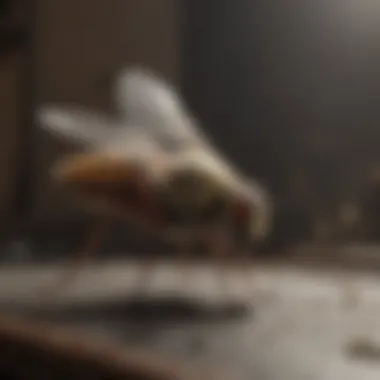
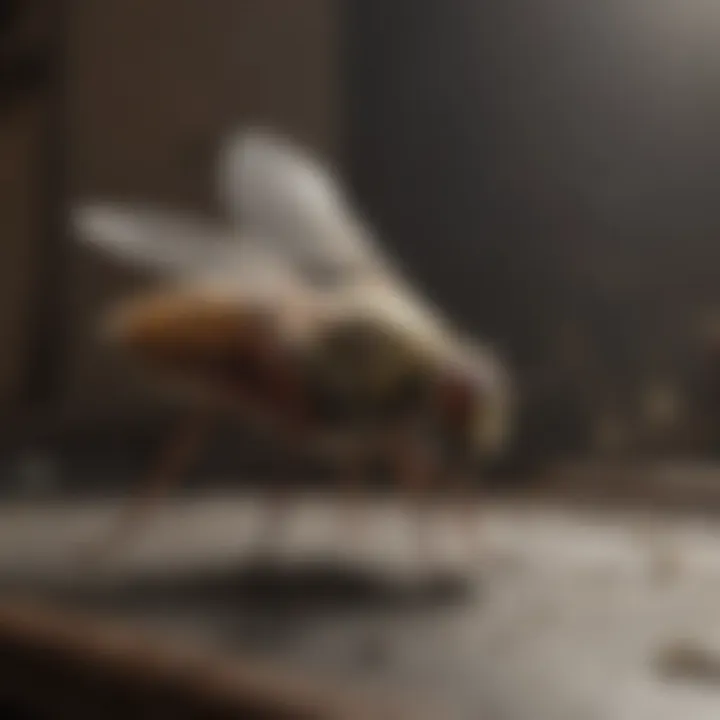
In summary, evaluating efficacy is a critical process in using industrial fly traps effectively. It involves understanding influencing factors and measuring success through systematic observations. This holistic approach empowers agricultural professionals to adapt and improve their pest management strategies.
Installation and Maintenance
The installation and maintenance of industrial fly traps are critical components that directly influence their effectiveness in agricultural settings. Properly installing these traps ensures optimal functionality, while regular maintenance is key to sustaining their performance over time. Understanding the nuances of both is essential for maximizing the benefits offered by these pest control solutions.
Optimal Placement
The placement of fly traps is a fundamental factor that affects their efficacy. Identifying the right locations increases the chances of capturing flies and reducing their numbers in targeted areas. Consider the following factors:
- Fly Activity Areas: Place traps near breeding sites or areas where flies are frequently seen. Common locations include waste storage areas, livestock facilities, and crop fields.
- Environmental Conditions: Avoid highly shaded areas or spots exposed to wind that can deter flies. Traps in sunny, calm locations tend to attract more flies.
- Accessibility for Maintenance: Ensure that traps are accessible for regular checks and maintenance. This will help in keeping them functional and replacing attractants when necessary.
Maintenance Routines
Regular maintenance is equally important, as it ensures traps are operating at peak performance. Neglecting this aspect can lead to decreased effectiveness over time. A solid maintenance routine can include:
- Routine Checks: Inspect traps weekly to assess their capture rates and overall condition.
- Cleaning: Remove debris, dead flies, and other materials that might hinder the trap's function. A clean trap is more inviting to flies.
- Replace Attractants: For baited and pheromone traps, replace attractants periodically to maintain their lure power. Different attractants may be more effective at different times of the year.
- Monitor Trap Position: Re-evaluate the placement if the traps are not performing well. Sometimes minor adjustments can significantly improve their effectiveness.
Implementing these installation and maintenance steps effectively will not only optimize the use of industrial fly traps but also contribute to a more sustainable agricultural environment.
Environmental Considerations
Environmental considerations are critical when evaluating the use of industrial fly traps in agricultural contexts. These devices do not operate in isolation; their interactions with surrounding ecosystems significantly influence not only pest management effectiveness but also the health of non-target species and biodiversity as a whole. Recognizing the delicate balance between effective pest control and environmental stewardship is essential for sustainable agricultural practices.
Impact on Non-Target Species
The design and operation of industrial fly traps must factor in their impact on non-target species. These can include beneficial insects, birds, and other fauna that may unintentionally come into contact with traps.
- Species Specificity: Certain traps, such as those using pheromone attractants, can inadvertently lure beneficial insects that are crucial for pollination. This unintentional capture may lead to a decline in beneficial populations, affecting crop yield due to reduced pollination efficiency.
- Disruption of Ecosystems: Should traps capture significant quantities of non-target organisms, the local ecosystem may become destabilized. For instance, reductions in pollinator populations can lead to lower agricultural productivity, creating a negative feedback loop that worsens pest issues.
- Mitigation Strategies: Farmers can employ specific strategies to minimize these impacts. These include:
- Strategic Placement: Positioning traps away from flowering crops and habitats known to house beneficial species can reduce unintended captures.
- Seasonal Timing: Utilizing traps during specific seasons when non-target insects are less active can help protect those populations.
Using traps designed with non-target species in mind can also mitigate adverse effects. Approaches such as using alternative attractants may help.
Sustainability Aspects
Sustainability is a prime focus in modern agriculture. It involves utilizing fly traps not just as effective pest management tools, but as components within a larger framework of eco-friendly practices.
- Reduction of Chemical Use: Industrial fly traps present a viable alternative to chemical pesticides. By utilizing traps, farmers can decrease their reliance on chemicals, thus minimizing chemical residues in crops and the environment. This is particularly important for organic farming practices, which seek to maintain soil health and reduce pollution.
- Resource Efficiency: Many modern fly traps are designed to be energy-efficient. Solar-powered electrical traps represent one innovation that aligns pest control with sustainable practices. These devices help reduce carbon footprints and energy expenses.
- Integrated Pest Management: Fly traps can be integrated into a broader pest management strategy, helping create biodiversity resilience in agriculture. When used alongside biological control methods or crop rotation, fly traps can enhance overall pest control efforts without endangering ecosystem health.
- Long-Term Viability: Research into the longevity and recyclability of trap materials informs sustainable practices. Farmers need to consider the lifespan of traps and seek those made from materials that can be recycled or safely disposed of, reducing landfill waste.
"Integrating environmentally conscious practices into fly trap use not only improves pest management but ensures that agricultural productivity remains viable long into the future."
In summary, the environmental considerations surrounding industrial fly traps are myriad and complex. Striking a balance between effective pest control and environmental protection is vital for promoting long-term agricultural sustainability.
Innovations in Fly Trap Technology
Innovations in industrial fly trap technology highlight a new frontier in pest control. These advancements are crucial for enhancing effectiveness and promoting sustainability in agricultural environments. The importance of this topic lies in its ability to improve yield quality and reduce dependency on chemical pesticides. With increasing awareness about environmental impact, these modern solutions provide essential tools for farmers.
Smart Traps
Smart traps represent a significant leap in the technology of pest management. They utilize connectivity and sensors to improve monitoring and trapping of flies. These devices can detect pest presence and send notifications to farmers via smartphone applications. This allows for immediate action based on real-time data, ensuring that traps are used effectively when pest levels rise.
- Benefits of Smart Traps
- Real-Time Monitoring: Farmers can observe trap effectiveness remotely.
- Data Analysis: Gathering data helps predict pest outbreaks and optimize pest control strategies.
- Resource Efficiency: Enables targeting traps’ usage, minimizing waste and cost.
Installations of smart traps can be integrated easily into existing systems. They also require less manual checking, saving time and labor resources. However, initial investment costs can be higher than traditional traps. Thus, careful consideration is needed before implementation. Smart traps align with modern agricultural practices.
"The integration of technology into pest control shows promise for sustainable agriculture."
Integrated Pest Management Solutions
Integrated Pest Management (IPM) solutions encompass a holistic approach to pest control. They combine different strategies to manage pest populations effectively. Fly traps play a vital role in IPM by providing a non-chemical method for controlling pests.
Key components of Integrated Pest Management include:
- Cultural Practices: Adjusting farming techniques to make the environment less hospitable to pests.
- Biological Control: Using natural predators or parasites to reduce pest populations.
- Mechanical Controls: Using traps as effective tools in conjunction with other methods.
While fly traps alone may not eradicate pest populations, they work best when part of a broader strategy. Such methods reduce reliance on chemical pesticides and mitigate environmental risks. The adoption of IPM can lead to healthier agroecosystems and better crop yields.
Overall, innovations in fly trap technology offer promising alternatives for pest control. The combination of smart traps and integrated approaches enhances agricultural practices while addressing sustainability challenges.
Case Studies: Effectiveness in Different Settings
Examining the effectiveness of industrial fly traps in different agricultural settings is crucial. Such case studies provide valuable insights into how these traps perform under varying conditions. They illustrate the practical implications of installing and maintaining fly traps, highlighting specific environments and their challenges. This practical approach allows for a deeper understanding of the unique benefits and limitations associated with different agricultural practices. Evaluating case studies helps refine pest control strategies and optimize the use of fly traps in diverse scenarios.
Row Crops
Row crops, which include staple grains and legumes, often face significant challenges from various pest populations. The impact of flies on these crops can lead to reduced yield and quality. Implementing industrial fly traps in row crop settings has shown promising results.
In many cases, the traps are strategically positioned along the field margins or within the crops themselves. This placement ensures maximum attraction. Farmers have reported several benefits, such as:
- Reduced Pest Pressure: The constant trapping of pests minimizes their reproductive capacity, leading to lower infestation rates.
- Cost-Effective Solution: Compared to chemical controls, fly traps offer a more sustainable and cost-efficient approach.
- Ease of Use: Farmers can install traps with minimal training, allowing for immediate pest control without significant structural changes.
The overall effectiveness largely depends on the type of flies present and environmental conditions. Regular monitoring of traps is necessary to assess their success and adapt strategies accordingly.
Orchards

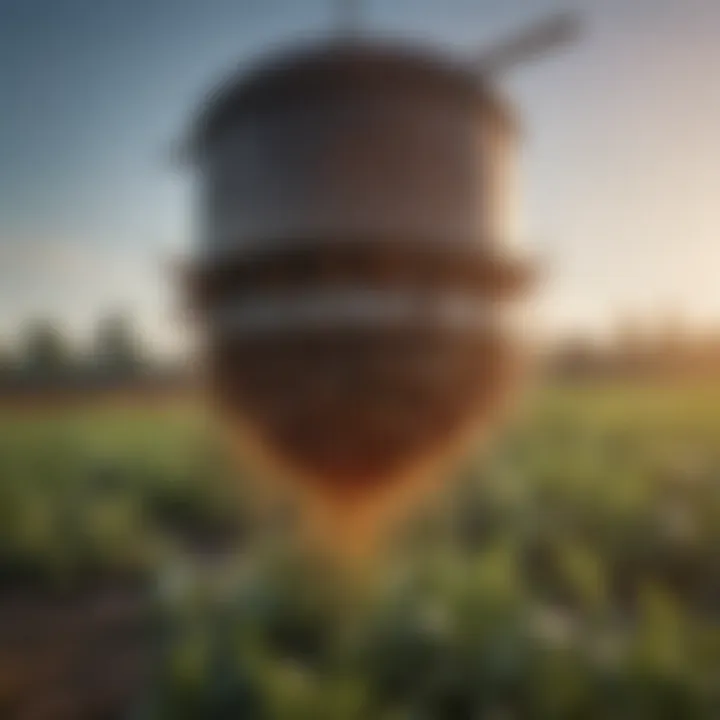
Orchards present a distinct challenge for managing flies, which can harm both the trees and the fruit. In these settings, the use of pheromone traps has gained traction, attracting specific pest species while leaving beneficial insects unharmed.
Key elements to consider include:
- Targeted Attraction: Pheromone traps lure specific flies away from fruit trees. This strategy not only protects crops but also promotes biodiversity among beneficial species.
- Integration with IPM: Fly traps can be an integral part of Integrated Pest Management (IPM) strategies, combining them with other control methods.
- Seasonal Monitoring: The varying life cycles of pests require that traps be monitored and replaced as needed, ensuring consistent control throughout the growing season.
Evaluations in multiple orchards have shown reduced pest infestations. This highlights how different fly trap technologies can be utilized effectively in diverse environments.
Dairy Farms
Dairy farms typically face significant fly problems, particularly from species such as house flies and stable flies. The presence of these pests not only annoys livestock but can also affect milk production and animal health.
Case studies indicate effective use of electric traps in dairy settings. The benefits of these traps are characterized by:
- Workforce Reduction: With effective traps in place, farmers find a sizable decrease in pest-related labor, allowing them to redirect efforts elsewhere.
- animal Health Improvement: Less fly presence contributes to better overall health and productivity of the herd.
- Constant Monitoring: Electric traps often come equipped with monitoring systems that alert farmers when maintenance is needed. This technological assistance ensures ongoing effectiveness.
Comparative Analysis with Other Pest Management Strategies
When discussing pest management in agricultural settings, it's critical to evaluate and compare various strategies. In this context, the comparative analysis between industrial fly traps and other pest management techniques sheds light on advantages, considerations, and the overall effectiveness of differing approaches. Understanding these distinctions can help farmers make informed choices tailored to their specific situations.
Chemical Control
Chemical control involves the application of synthetic or natural pesticides to manage insect populations. This method offers quick results as it reduces pest numbers efficiently. Chemicals target various life stages of pests, from larvae to adults, allowing farmers to disrupt their lifecycle significantly.
However, the reliance on chemical control poses challenges. Issues such as resistance development, environmental contamination, and impacts on non-target species are of concern. For example, the overuse of neonicotinoids has raised alarm bells due to its consequences on pollinators. Moreover, residues from chemicals may enter the food chain, risking human health. In contrast, industrial fly traps offer a non-chemical option that minimizes these risks while still effectively controlling pest populations once installed correctly.
Biological Control
Biological control usually entails the introduction of natural predators or parasites to manage pest populations. This method promotes biodiversity and can lead to lasting pest management solutions. For example, releasing predatory wasps can help diminish fly populations without reliance on chemicals. The ecological balance grows stronger through biological control as it creates a more sustainable system.
However, there are also challenges associated with this strategy. Biological control mechanisms may take time to establish. Furthermore, effectiveness can fluctuate due to environmental factors. Unlike industrial fly traps, which provide immediate results, biological control requires a longer-term commitment. Understanding the specific ecosystem dynamics is crucial for success. Therefore, a comprehensive pest management program may benefit from integrating multiple approaches—including industrial fly traps, chemical methods, and biological solutions.
"Integration of various pest management strategies can lead to enhanced efficacy and sustainability in agricultural practices."
Ultimately, the path to effective pest management lies in balancing these various strategies. An integrated approach allows for a nuanced perspective, where industrial fly traps serve as a valuable component, alongside chemical and biological controls, depending on the specific challenges faced by farmers.
Regulatory Guidelines and Standards
Understanding regulatory guidelines and standards is critical for the successful implementation of industrial fly traps in agriculture. These regulations help ensure that the traps not only function effectively but also minimize risks to humans, animals, and the surrounding environment. Adhering to these guidelines can enhance the credibility of agricultural practices and provide assurance to consumers regarding food safety.
Health and Safety Regulations
Health and safety regulations establish necessary criteria for the design, installation, and operation of fly traps. These standards are crucial to safeguard users from potential hazards linked with chemical exposure or accidental injuries. Compliance with health and safety regulations typically involves:
- Proper Use of Chemicals: For traps that use attractants or insecticides, clear guidelines dictate acceptable concentrations to prevent harm to non-target species and minimize risks to human health.
- Safety Training: Farmers and workers should receive training on how to use and maintain fly traps safely. This includes awareness of the potential irritants from dropped flies or chemical elements in bait.
- Labeling Requirements: Clear labeling ensures that all safety information is available. Labels should specify the proper handling instructions, first aid measures, and emergency contact details.
Adhering to these regulations can also improve public perception of agricultural practices, showing a commitment to worker safety and health.
Environmental Regulations
Environmental regulations address the broader impact of industrial fly traps on ecosystems. These guidelines ensure sustainable use and minimize negative effects on non-target organisms. Key components include:
- Impact Assessments: Before deploying traps, assessments might be necessary to evaluate how they affect local wildlife. Understanding any adverse effects to non-target species helps design better traps and traps more responsibly.
- Biodegradability of Materials: Regulations often encourage the usage of materials that are environmentally friendly. The manufacture and disposal of traps that can harm the ecosystem are, therefore, discouraged or regulated.
- Reporting and Monitoring: In some regions, farmers are required to track the efficacy of traps over time. Monitoring their impact on both target and non-target species fosters accountability and ongoing improvement.
Adhering to environmental standards not only promotes sustainability but can also heighten operational efficiency by reducing long-term costs associated with pest management.
"Compliance with regulatory guidelines optimizes the successful integration of fly traps, supporting both agricultural productivity and environmental stewardship."
Future Directions in Fly Control Research
The topic of future directions in fly control research is crucial in enhancing pest management strategies in agriculture. As agricultural practices evolve to meet the demands of sustainability and efficiency, the role of technology and innovation becomes increasingly important. This section explores emerging trends and potential innovations that could reshape the use of industrial fly traps in managing pest populations. Understanding these developments allows farmers and enthusiasts to stay informed and adapt to new methodologies that can improve efficacy.
Emerging Trends
Research in fly control continually uncovers new trends that influence how pest management is approached. Among these trends, one notable focus is the integration of digital technologies into pest control. Many modern traps now incorporate sensors and monitoring systems that provide real-time data on insect activity. This supports more precise applications and reduces unnecessary pesticide use. Other trends include:
- Data-Driven Decision Making: Utilizing data analytics to predict infestations and optimize trap placement.
- Increased Regulation Compliance: As environmental guidelines tighten, the development of traps that minimize ecological impact is paramount.
- Cross-Disciplinary Approaches: Collaborations between entomologists, biologists, and technologists bring fresh ideas to traditional methods of pest control.
Potential Innovations
The future holds numerous possibilities for innovations in industrial fly traps. One promising area is the advancement of trap designs that enhance attractivity and capture rates. For instance, traps with adjustable lights or forms of bait could be more effective in diverse environmental conditions. Potential innovations to watch include:
- Biodegradable Materials: To reduce waste, traps made from sustainable materials could become standard in agriculture.
- Smart Traps: Incorporating AI and IoT technology for automated trap functions and monitoring could revolutionize pest control efforts.
- Integrated Pest Management (IPM) Strategies: Future research may lead to fly traps that seamlessly integrate with other pest management techniques, creating a holistic approach to pest control.
"Innovations in fly trap technology not only help in pest management but also contribute to sustainable agricultural practices."
In summary, future directions in fly control research point toward a more integrated, data-driven, and eco-friendly approach to managing fly populations in agricultural settings. By embracing these emerging trends and potential innovations, farmers can enhance the effectiveness of fly traps, ensuring they are equipped to face the challenges of modern agriculture.
Culmination
The conclusion of this article offers an essential summation of the key elements discussed regarding industrial fly traps. It ties together the various strands of information to present a holistic understanding of these devices and their significance in agricultural settings. By summarizing the mechanisms of operation, different applications, and the comparative effectiveness of fly traps, this section serves as a vital reference point for anyone looking to optimize their pest control strategies.
Recapitulating Key Points
In reviewing the critical aspects of industrial fly traps, several key points emerge:
- Types of Traps: Understanding the various types, including mechanical, electric, pheromone, and baited traps, enables informed choices based on specific needs.
- Mechanisms of Operation: Familiarity with attraction methods, capture and kill strategies is crucial for selecting effective traps.
- Applications in Agriculture: Fly traps can significantly contribute to crop protection and livestock management, providing a safer alternative to chemical treatments.
- Efficacy Factors: Installation and maintenance practices influence the overall success of fly traps, as does their environmental impact.
- Future Directions: Ongoing research and emerging technologies indicate a promising future for fly trap innovations in agriculture.
This critical reflection encapsulates the overarching themes of the article while reinforcing the pivotal role of fly traps in modern agricultural practices.
Final Thoughts on Legitimacy in Agriculture
The relevance of industrial fly traps extends beyond mere pest management. Their legitimacy in agriculture stems from multiple considerations:
- Sustainable Practices: Utilizing fly traps aligns with sustainable agricultural methods, reducing reliance on harmful chemicals.
- Economic Viability: Effective pest control leads to better yield and quality of produce, thus supporting farmers' economic interests.
- Public Health: By managing fly populations, these traps contribute to improved hygiene and reduced transmission of diseases.
- Regulatory Compliance: Adhering to health and safety standards regarding pest control helps maintain agricultural legitimacy and public trust.



